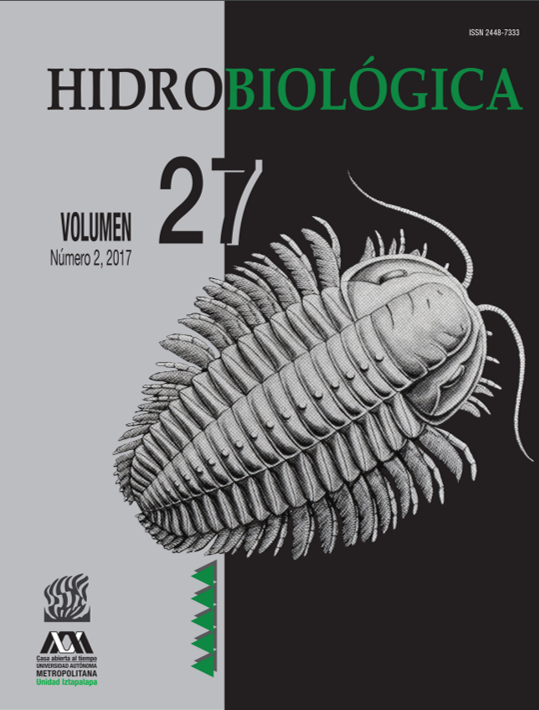The relationship between the massive nesting of the olive ridley sea turtle (Lepidochelys olivacea) and the local physical environment at La Escobilla, Oaxaca, Mexico, during 2005
DOI:
https://doi.org/10.24275/uam/izt/dcbs/hidro/2017v27n2/CoriaPalabras clave:
Arribada, eddies, La Escobilla, Lepidochelys olivacea.Resumen
Background. Sea turtles of the genus Lepidochelys exhibit a complex and synchronous mass-nesting behavior termed arribada. Goals. This paper analyzes the local physical environment during the arribada events that occurred in 2005 at La Escobilla, Oaxaca, Mexico. Methods. Daily night patrols were conducted from May to November 2005, along the nesting zone. Daily records for air temperature and rainfall were obtained from the automatic weather station by the Comisión Nacional del Agua. Sea surface temperature and salinity fields were obtained from the Hybrid Coordinate Ocean Model (HYCOM), and surface ocean currents were obtained from the Asia-Pacific Data Research Center. Results. The analyses showed five arribada events during the period. A common feature was the presence of eddies and strong currents at the beginning of each arribada. A correlation of statistical significance was observed between the abundance of the arribada and the current speed (R = 0.93, R2 = 0.86, p = 0.04). The correlation with salinity showed values of R = 0.55, R2 = 0.31, p = 0.32, whereas correlation with rainfall was R = 0.53, R2 = 0.28, p = 0.14. A weak correlation was observed with air temperature (R = 0.35, R2 = 0.12, p = 0.59) and with sea surface temperature (R = 0.23, R2 = 0.05, p = 0.66). Conclusions. Although sea turtles are strong swimmers, the proximity to favorable oceanic currents generated by eddies might be related to the beginning of the arribada, considering that this current might provide energy savings and accumulate
chemical compounds and food in the water column.
Descargas
Publicado
Cómo citar
Número
Sección
Licencia
Los autores/as que publiquen en esta revista aceptan las siguientes condiciones:
De acuerdo con la legislación de derechos de autor, HIDROBIOLÓGICA reconoce y respeta el derecho moral de los autores, así como la titularidad del derecho patrimonial, el cual será cedido a la revista para su difusión en acceso abierto.
Publicar en la revista HIDROBIOLÓGICA tiene un costo de recuperación de $500 pesos mexicanos por página en blanco y negro (aproximadamente 29 dólares americanos) y $1000 pesos por página a color (aproximadamente 58 dólares americanos).
Todos los textos publicados por HIDROBIOLÓGICA sin excepción se distribuyen amparados bajo la licencia Creative Commons 4.0Atribución-No Comercial (CC BY-NC 4.0 Internacional), que permite a terceros utilizar lo publicado siempre que mencionen la autoría del trabajo y a la primera publicación en esta revista.
Los autores/as pueden realizar otros acuerdos contractuales independientes y adicionales para la distribución no exclusiva de la versión del artículo publicado en HIDROBIOLÓGICA (por ejemplo incluirlo en un repositorio institucional o publicarlo en un libro) siempre que indiquen claramente que el trabajo se publicó por primera vez en HIDROBIOLÓGICA.
Para todo lo anterior, el o los autor(es) deben remitir el formato de Carta-Cesión de la Propiedad de los Derechos de la primera publicación debidamente requisitado y firmado por el autor(es). Este formato se puede enviar por correo electrónico en archivo pdf al correo: enlacerebvistahidrobiológica@gmail.com; rehb@xanum.uam.mx (Carta-Cesión de Propiedad de Derechos de Autor).
Esta obra está bajo una licencia de Creative Commons Reconocimiento-No Comercial 4.0 Internacional.


